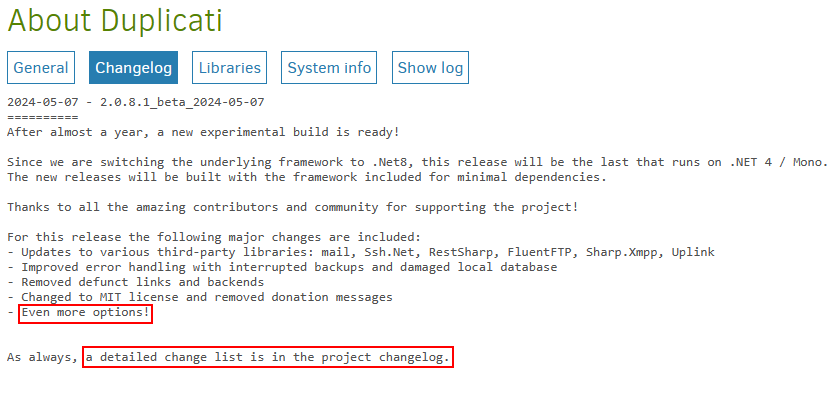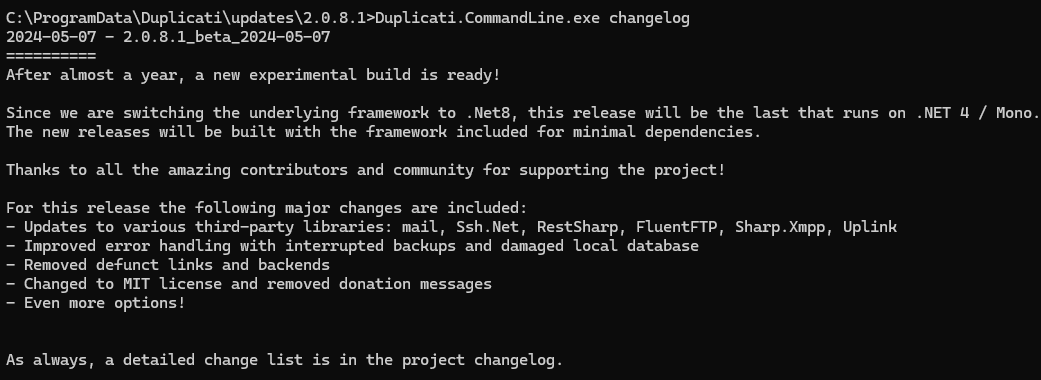There is after an install, but the definition is obscure. This is being changed during the move to .NET 8.
A base install is not a stability level, but the install from an OS package, such as .msi, .deb, and so on.
The base install has a channel associated with it, also visible in the file name, and the setting shown is
simply saying that if you installed from a given channel, the default is to keep giving you updates from it.
Channels are a current concept, for example:
Chrome Release Channels
Windows client updates, channels, and tools
The current autoupdate system lets Duplicati offer updates which are installed without admin privilege, however they are stored separately from the base install. The result, in About → System info, is these:
BaseVersionName and ServerVersionName which might be the same as the base without an update.
In the upcoming scheme, I think there will still be channels, but the update will be more like usual install.
This avoids having to explain how the base install runs the latest installed version of Duplicati it can find.
There were other problems too.
It’s listed that way because it’s true. It’s not yet in cycles like Debian. It’s a climb towards its initial Stable.
One thing I would say is that Duplicati has had a very long Beta, but it’s been very resource constrained.
Debian testing has a similar definition (but more formal), as they are fixing their issues to get to stable.
Debian’s first stable was released in 1996, possibly not rock solid, because software is rarely that good.
Duplicati, like most software, gets a flow of issues reported, but that’s from 65 million backups per year.
GitHub tracks the backlog, not every issue can be fixed at once, and the work priority was shown above.
Software is hard, and regular volunteers are often rare. This limits the speed of progress that is possible.
Everyone would like Duplicati to run perfectly, but wanting it doesn’t make it so, or possible to make it so.


